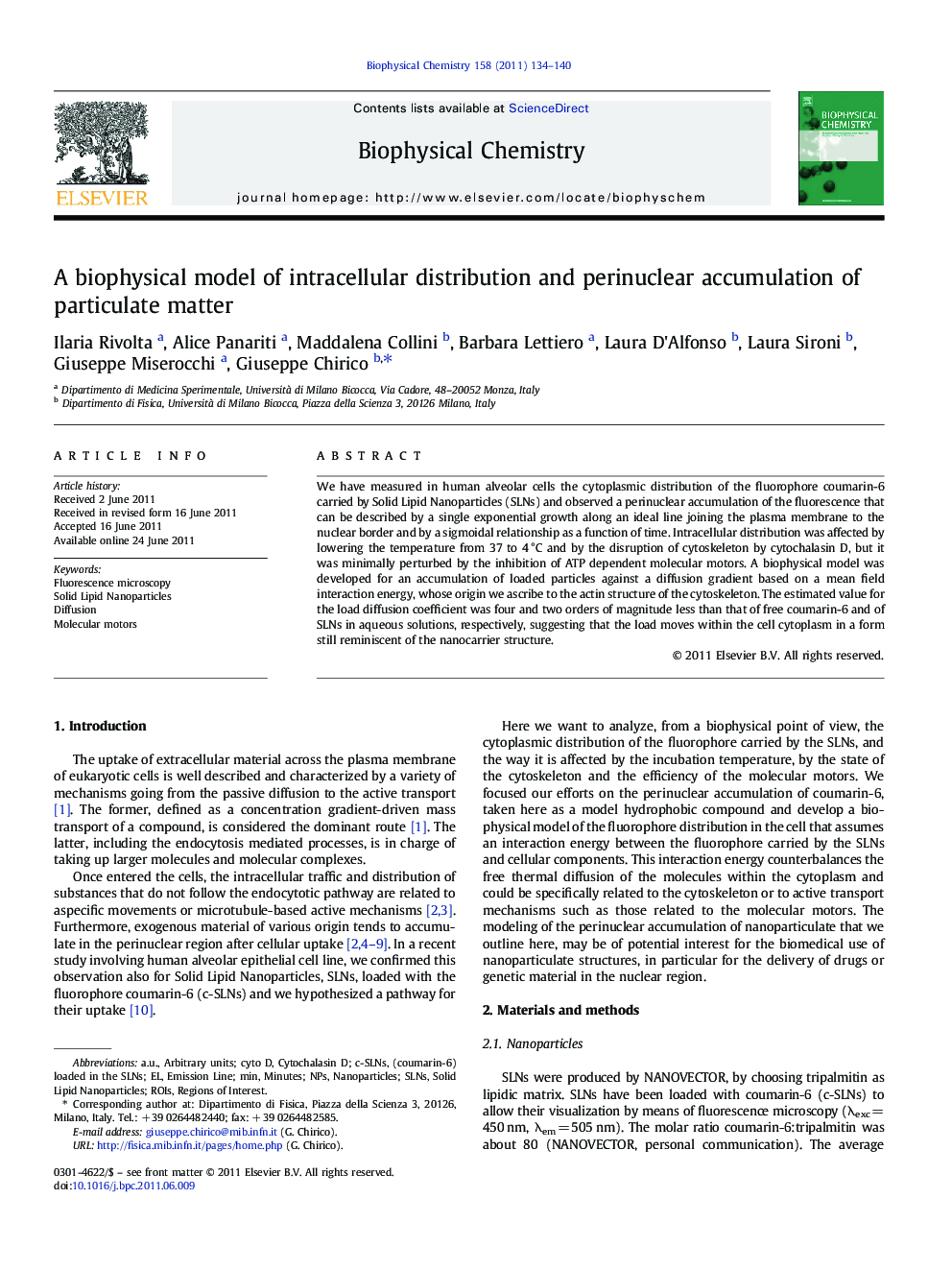| Article ID | Journal | Published Year | Pages | File Type |
|---|---|---|---|---|
| 5371296 | Biophysical Chemistry | 2011 | 7 Pages |
We have measured in human alveolar cells the cytoplasmic distribution of the fluorophore coumarin-6 carried by Solid Lipid Nanoparticles (SLNs) and observed a perinuclear accumulation of the fluorescence that can be described by a single exponential growth along an ideal line joining the plasma membrane to the nuclear border and by a sigmoidal relationship as a function of time. Intracellular distribution was affected by lowering the temperature from 37 to 4 °C and by the disruption of cytoskeleton by cytochalasin D, but it was minimally perturbed by the inhibition of ATP dependent molecular motors. A biophysical model was developed for an accumulation of loaded particles against a diffusion gradient based on a mean field interaction energy, whose origin we ascribe to the actin structure of the cytoskeleton. The estimated value for the load diffusion coefficient was four and two orders of magnitude less than that of free coumarin-6 and of SLNs in aqueous solutions, respectively, suggesting that the load moves within the cell cytoplasm in a form still reminiscent of the nanocarrier structure.
Graphical abstractDownload full-size imageHighlights⺠We have measured the cytoplasmic distribution of the coumarin-6 carried by Solid Lipid Nanoparticles in human alveolar cells. ⺠Observed a perinuclear accumulation of the fluorescence that we model with the a mean field interaction of the load with the cytoskeleton. ⺠Experiments as a function of temperature, the cytoskeleton state and metabolic poisons validate this analysis.
